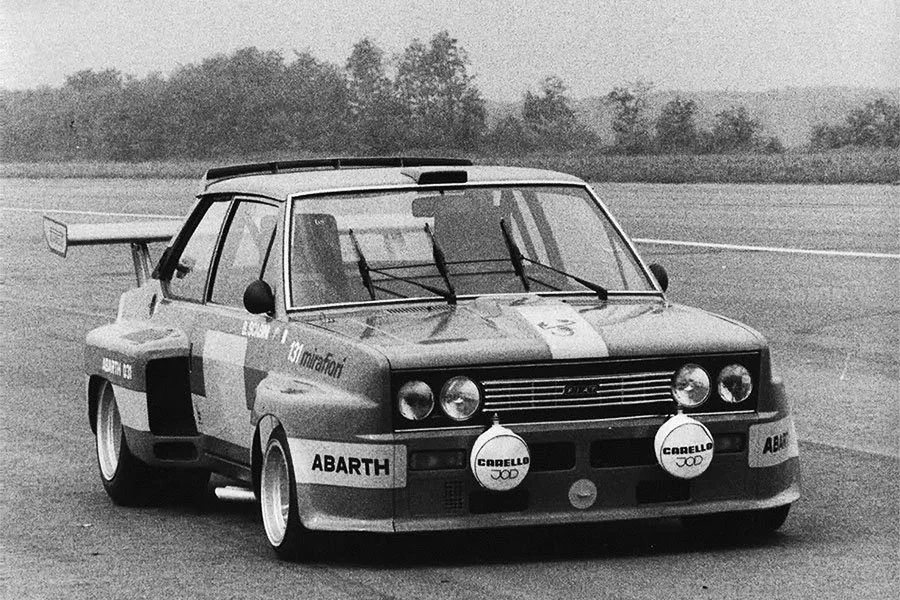Guide: Fiat Dino 2400 Spider - a Historical & Technical Appraisal
/BACKGROUND
Although production of the two-litre Fiat Dino Spider was discontinued in December 1968, an improved version with enlarged 2.4-litre engine entered production in September 1969.
Freed from the time pressure they were originally under to get the model into production (to homologate the Dino engine for use in Formula 2), Fiat took the opportunity to implement a series of significant technical improvements.
They also established a new dedicated production line at the Ferrari factory in Maranello so as not to interrupt their Rivalta factory with small runs of Dinos.
The 2.4-litre V6 engine was unveiled in the new Ferrari Dino 246 GT at the Geneva Motor Show during March 1969. This car entered production in August and the heavily revised Fiat Dino 2400 Spider followed in September.
The Fiat was then officially unveiled at the Turin Motor Show in October 1969.
By the time the 2400 Spider was in production, Ferrari had abandoned Formula 2 racing. The Dino 166 had been moderately successful but when Enzo Ferrari sold a majority stake in his company to Fiat in mid 1969, the F2 programme was dropped to focus on Formula 1 and the World Sportscar Championship.
This investment garnered Fiat the influence needed to establish the Dino 2400 production line in Maranello.
Upgrades made to the Dino 2400 Spider were extensive despite the heavily revised model outwardly appearing almost identical to its predecessor. The suspension, brakes and engine all came in for attention and build quality was far superior.
CHASSIS
The Dino Spider’s steel unibody shell was modified to accept independent rear suspension derived from the Fiat 130. This replaced the rigid rear axle of the original that had been lifted from the old Fiat 2300 S. The suspension therefore became independent all round with anti-roll bars now fitted front and rear.
Bigger Girling discs and calipers improved braking performance. As before, they were ventilated and ran off a dual circuit system with vacuum servo assistance.
Size-wise, the Cromodora 14 x 6.5-inch cast magnesium wheels were unchanged but the 2400 switched to a five bolt fixing instead of a single hub nut. Slightly wider Pirelli Cinturato tyres became standard.
Fiat also fitted an enlarged 70-litre fuel tank in the boot floor to replace the original 66-litre item.
ENGINE / TRANSMISSION
At the heart of the revised Fiat Dino Spider was a new Tipo 135 C 000 engine with a 2.4-litre displacement. It featured a redesigned cast-iron block that was cheaper (and heavier) than the alloy block of the outgoing Tipo 135 B 000 two-litre unit.
Another 65° V6 with dual overhead camshafts, displacement rose by 431cc. This was achieved by taking the bore from 86mm to 92.5mm and extending the stroke from 57mm to 60mm.
Compression was unchanged at 9.0:1.
New Weber 40 DCNF 12 carburettors were fitted and, like late two-litre Dino Spiders, Magnetti Marelli Dinoplex electronic ignition was fitted as standard.
Output rose to 180bhp at 6600rpm compared to 160bhp at 7200rpm. There was also considerably more torque on offer: 159lb-ft at 4600rpm whereas the original mustered 126lb-ft at 6000rpm.
The Fiat gearbox and limited-slip differential were replaced with ZF equipment from Germany. A dogleg five-speed ZF S5-18/3 gearbox was similar to the type used in the 130 and had revised ratios.
ZF also supplied the limited-slip differential while the larger diameter clutch was now hydraulic rather than cable-operated.
BODYWORK
Cosmetically, there were a number of minor updates.
In addition to being badged Dino 2400 instead of Fiat Dino, a new grille was fitted with two horizontal chrome bars to replace the original egg crate arrangement.
New bumpers with rubber inserts were also installed and the front wing script now had a side repeater instead of a Pininfarina badge. The coachbuilder’s badge was relocated to in front of the rear wheel.
Otherwise, Pininfarina’s lovely exterior was left unchanged.
INTERIOR
Inside, there were some minor switchgear alterations and fit and finish was improved but the layout was much as before.
The instrumentation was grouped together in a single binnacle directly behind the three-spoke wood-rimmed steering wheel. Large read outs for engine and road speed were flanked by smaller dials for oil temperature, oil pressure, fuel level and water temperature.
The dash and centre console were fitted with wood veneer inserts.
The rest of the upholstery was black vinyl,
OPTIONS
Aside from newly available headrests, the options list was as before.
Buyers could enhance their cars with a radio, metallic paint, leather upholstery and a vinyl covered hardtop with stainless steel roll bar.
WEIGHT / PERFORMANCE
The heavier engine and improved equipment fitted to the 2400 Spider meant weight rose by 90kg to 1330kg.
Top speed and the 0-62mph time were unchanged at 130mph and 8 seconds respectively.
However, the 2.4-litre engine’s greater flexibility and the new independent rear suspension meant the all-round driving experience was much improved.
PRODUCTION
Production of the 2400 Spider started in September 1969 and continued until January 1972 by which time 420 had been completed.
No right-hand drive examples were built and, once discontinued, the Fiat Dino 2400 Spider was not replaced.
Text copyright: Supercar Nostalgia
Photo copyright: Fiat - https://www.fiat.com




















